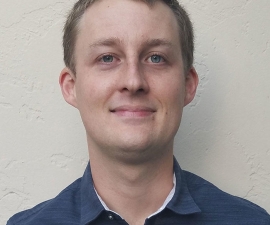

Research Bio
Humans and microorganisms alike utilize O2 to activate hydrocarbons in order to maintain proper cell function and detoxify foreign pollutants. Certain anaerobic bacteria and archaea transduce energy derived from arene- or halocarbon-reduction to support growth. Central to all of these processes are unique metalloenzymes that make use of polynuclear inorganic active sites composed of Earth-abundant transition metal ions. Research in the Rittle group focuses on understanding how these active sites functionalize such recalcitrant organic molecules and developing new strategies in the synthesis of reactive inorganic cluster compounds. Using this knowledge, our long-term goal is to develop powerful and selective synthetic catalysts that utilize multiple transition metal ions and to inspire new therapeutic strategies.
Researchers of the lab utilize the tools of synthetic chemistry, structural biology, and various spectroscopic methods to elucidate the molecular- and electronic structures of reactive polynuclear fragments. For example, we are particularly interested in a class of diiron enzymes that selectively convert alkanes into either alcohols or alkenes/alkynes and how the protein structure tunes the chemical outcome of these transformations. To facilitate these investigations and to expand upon the diverse biocatalytic potential of these enzymes, we are developing biosynthetic and computational strategies to rationally improve the stability and solubility of these enzymes.
Enzymes that employ redox-active metalloclusters have evolved beautiful but complex means of directing the flow of protons and electrons between their various substrates. The development of catalytically-competent cluster fragments in the absence of such elaborate protein scaffolds hence requires the design of modular ligand frameworks that can support the polynucleation of transition metals in multiple redox- and protonation states. With this in mind, we are developing molecular cluster compounds that function in the proton-coupled reduction of small molecules, such as CO2 or N2, and facilitate the manipulation of hydrogen atoms of organic molecules for selective bond (de)construction.
Research Expertise and Interest
inorganic chemistry, biochemistry, crystallography, spectroscopy
